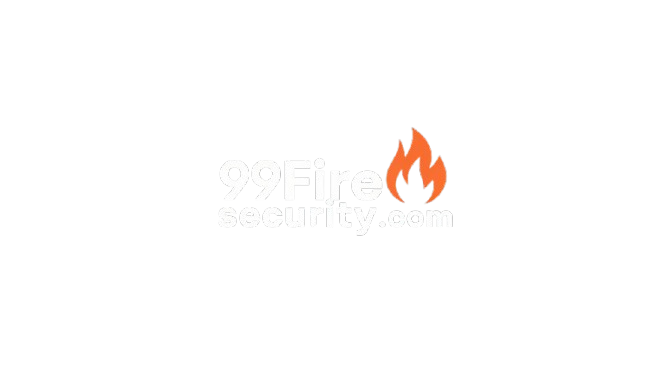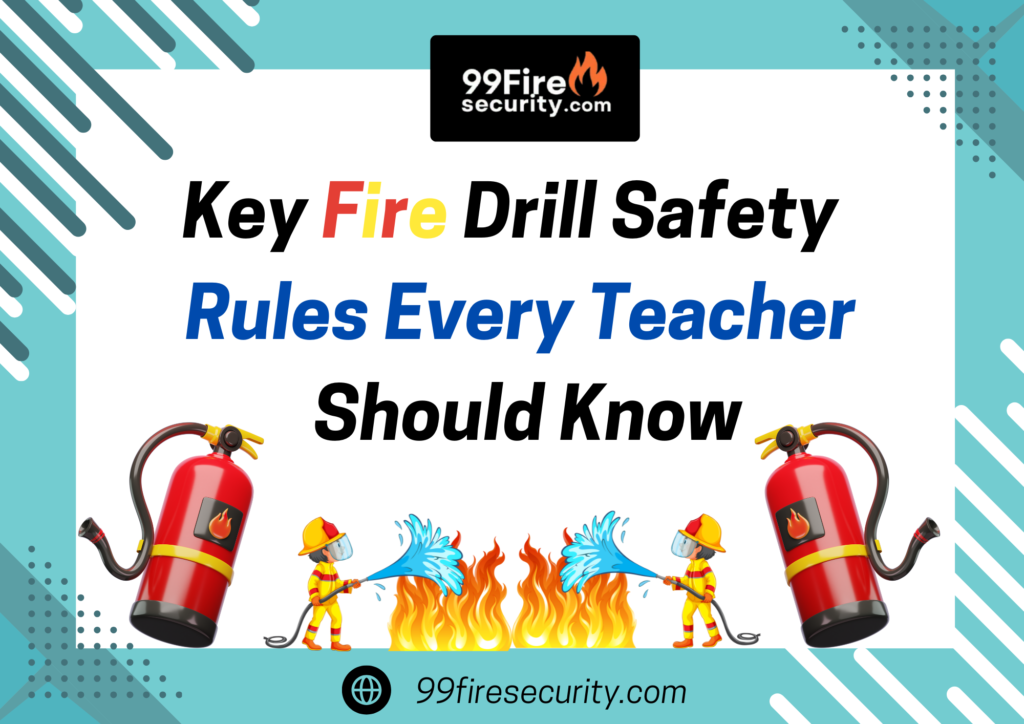Fire drills are an important aspect of school safety for students and staff. Teachers help keep the peace during such drills. Making sure that students know how to evacuate the building quickly and safely. Fire drills can be practiced in schools and workplaces to save lives in case of real emergencies. A guide of the most important fire drill safety rules every teacher. should know to prepare for quick and efficient fire drills.
Be Familiar with Your School’s Evacuation Plan
A fire evacuation plan should be in place at every school and should note the safest and fastest routes out of the building. You should know this plan as a teacher, and you should ensure that students are familiar with the evacuation routes ahead of time.
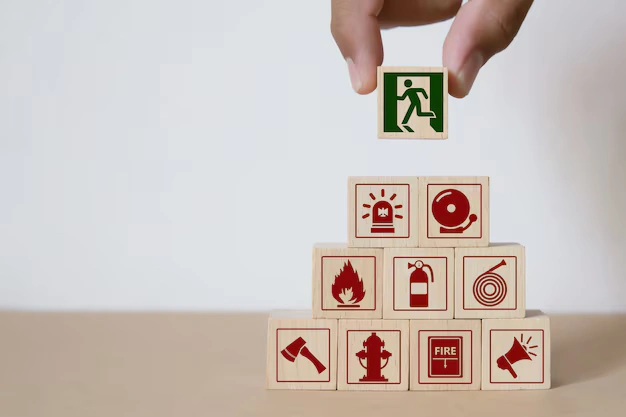
Evacuation Routes
- Learn at least two evacuation routes from your classroom in case one way is blocked.
- Make sure all the exits doors clear and accessible.
- Know your assembly points where students and staff will wait after leaving the building.
Practice with Your Students
Obviously, your students need to know your evacuation plan BEFORE the Fire Drill Safety. Ensure they grasp the significance of remaining composed and acting swiftly.
Stay Calm during the Drill
A valuable lesson for teachers is to stay calm and composed while conducting a Fire Drill Safety. Your students will be looking to you for guidance and reassurance, so your actions will determine how they will behave.
Lead the Evacuation
- Avoid congesting hallways so that students can vacate the building in an efficient manner.
- Whistle the students together as a group and lead them out through specified exit points.
- Be ready to assist special needs or any student who needs extra help.
Account for All Students
Use a Roll Call
Make a list of all of your students before you begin the drill. Once the drill is complete and your class is outside in a safe place, use your roll call list to make sure that all students have been accounted for.
Report Missing Students
- If there are students unaccounted for after the drill, immediately notifying emergency responders or school officials. Do not re-enter the building until it is deemed safe by the fire department.
- Adhere to the School’s Communication Protocols
Listen for Announcements
If a fire drill is announced, listen for any possible instructions coming from school officials or emergency responders. They might issue specific directions or updates for the drill, and it’s important to follow these instructions in order to stay safe.
Report Issues
At the end of the drill, if you noticed anything of concern, like blocked exits or students not following procedures and report it to school officials.
Regular Evacuation Procedures Practice
Routine Fire Drills
Fire drills are conducted on a regular basis to prepare students and staff in the case of an actual emergency.
Reinforce Fire Safety Lessons
In addition to conducting Fire Drill Safety teachers need to teach fire safety in their academic systems. Teach students about fire presentation, emergency evacuation and importance to stay calm during an emergency.
Know Where to Find Fire Extinguishers and Emergency Equipment
Know Safety Gear
Be familiar with the locations of the nearest fire extinguisher. First aid kit emergency exits in your classroom and within the school. Knowing these items and how to use them can be critical in an actual emergency.
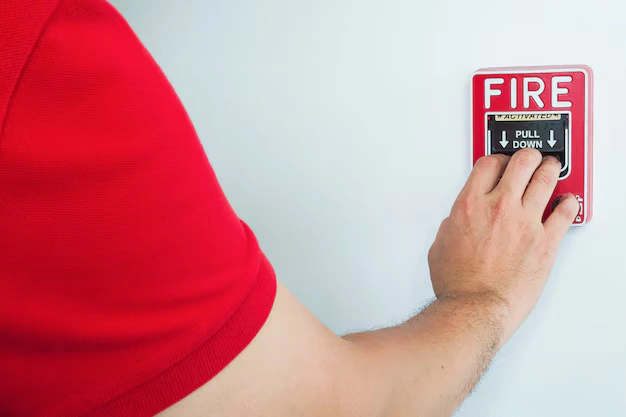
Use Fire Extinguishers Safely
Teachers should know how to safely use a fire extinguisher, in case a fire breaks out in the classroom or nearby. Teachers should never attempt to fight a fire that is too large or out of control. The utmost priority is the safe evacuation of the students.
Handle Students’ Anxiety
Manage Student Emotions
Some students might be anxious or scared in a Fire Drill Safety, especially if they’ve never done one before. As a teacher, it’s your duty to help assuage their fears and teach them why remaining calm is essential.
Provide Reassurance
Speak to the students in a calm manner and reassure them that the drill is a practice exercise to keep them safe.
Focus the students on following the evacuation procedures and reinforce the idea that speed is important but panicking is not.
Avoid Delays and Distractions
No Delays
Do not let students pick up personal items (e.g. backpacks, coats) during a Fire Drill Safety. Those items slow down the evacuation process. Make students leave the building efficiently without slowing down.
Close Doors behind You
As you leave the classroom, shut the door behind you. This prevents the diffusion of fire and smoke. Therefore protects the students as well as the building.
Make it Accessible to All Students
Assist Students with Special Needs
Do assist students with disabilities and special needs in evacuating. Have a plan in place for how to evacuate students who might need extra assistance. Like students with wheelchairs and students who have difficulty moving around.
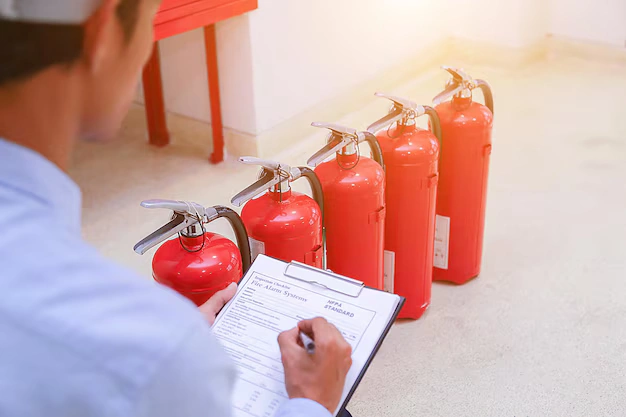
Willingness in the Evacuation Plan to Check for Accessibility
Make sure that the school evacuation plan includes mechanisms for accounting for students with special needs. That there are trained staff members prepared to assist them during an emergency.
Drill, and Learn from the Drill
Debrief After the Drill
After the drill, bring your students together and talk about things that went well and things that could be improved. Talk about the challenges you faced in the drill. Make adjustments to ensure smoother evacuations in the future.
Figure Out How to Connect with School Officials
After the drill, give your comments to the school administration and safety team. Feedback like this is important for refining and improving future drills. To ensure that we have procedures in place that actually works.
Conclusion
That is why fire drills are a necessity in schools to keep everyone safe. Teachers fulfill an essential role in guiding their students through the evacuation process and ensuring that everyone stays calm and safe. Teachers can provide a safe environment for students to build their awareness. When it comes to fire drill safety rules and calming their mind. Knowing the evacuation routes and being prepared. Note to self. Your fire drill training is on a data until October 2023.
FAQs
How often fire drills should occur in schools?
Fire drills are supposed to be done at least once per semester — a best practice in many schools is to do those more often to get everyone prepared.
What if a student gets hurt during a fire drill?
In the event a student is injured during a fire drill report the injury to emergency responders right away. Follow the school’s procedures for medical emergencies. Get the student medical help as soon as possible.
Is it possible to allow students to bring their phones to a fire-drill?
Students should not be permitted to bring their phone in a fire drill as it may distract them from the evacuation. Doing so should be the emphasis. Getting out of the building as quickly and safely as possible.
What happens if a student does not evacuate during a fire drill?
If a student does not want to evacuate, calmly provide clear directions to the exit and the reasoning for the drill. In the event they do resist further and notify school officials to take appropriate action.
Are fire drills good only for emergencies, or can they also serve as practice?
The best land drills will also teach the students to get to know what the staff is actually saying him and also herd these on the right path. Regular drills help everyone know what to do in case of an actual fire.
